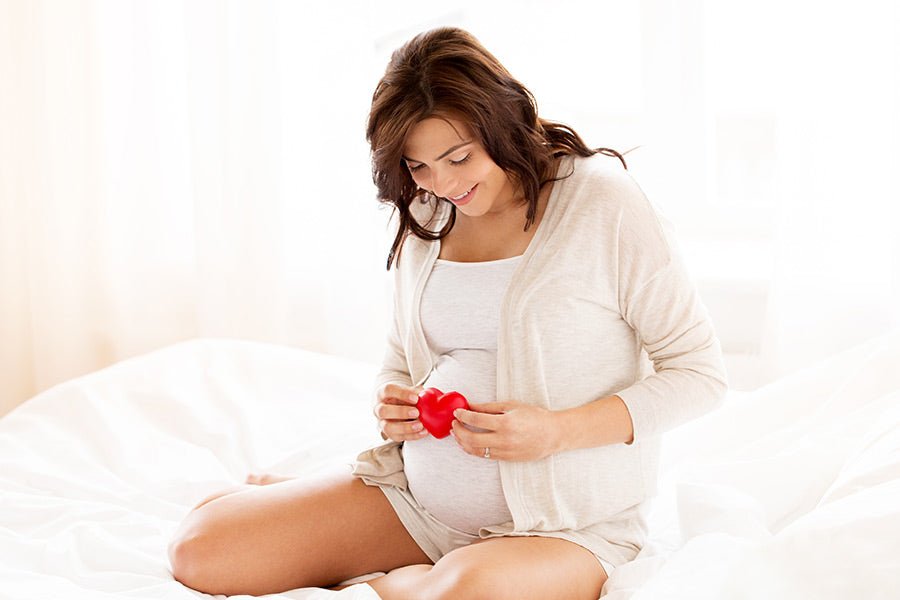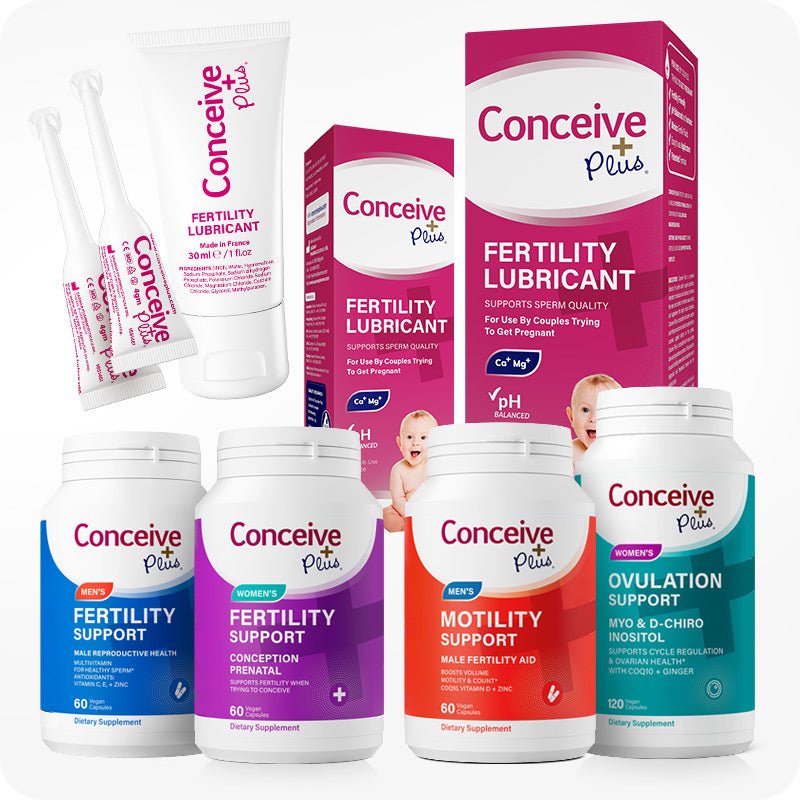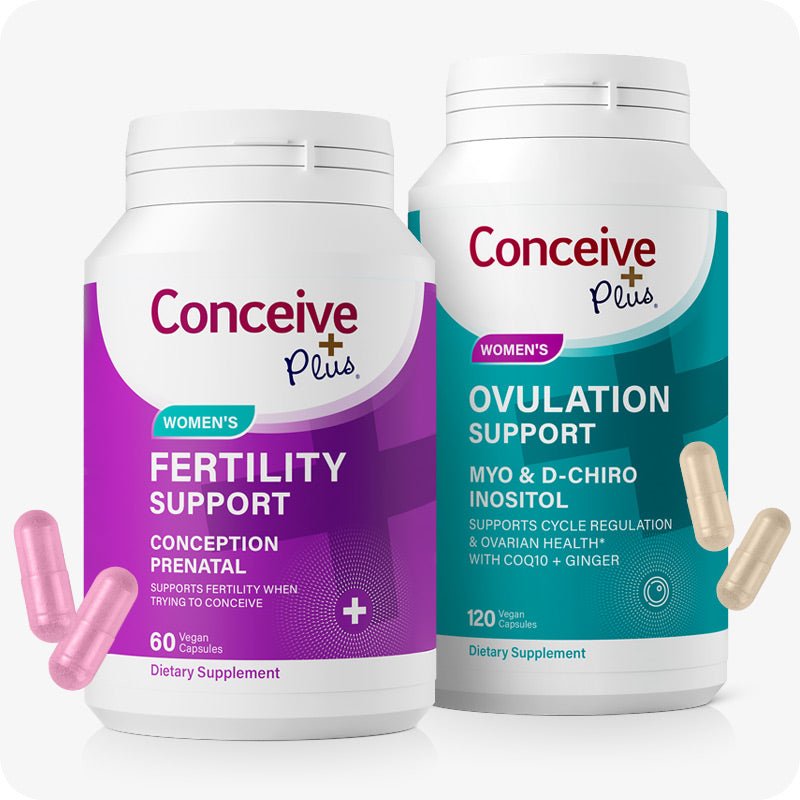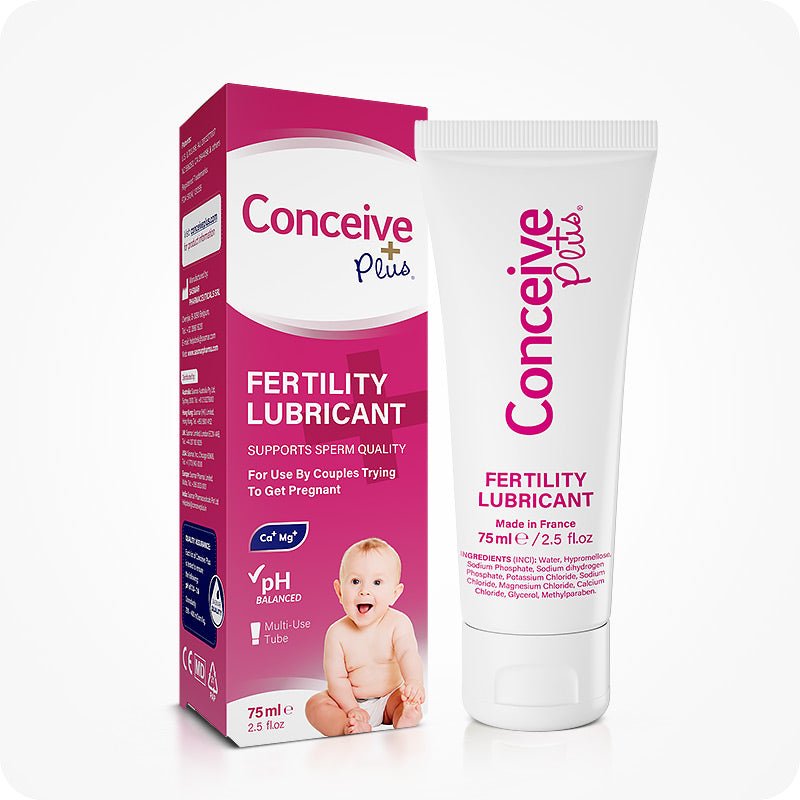Period Cramps vs Early Pregnancy Cramps: How to Differentiate
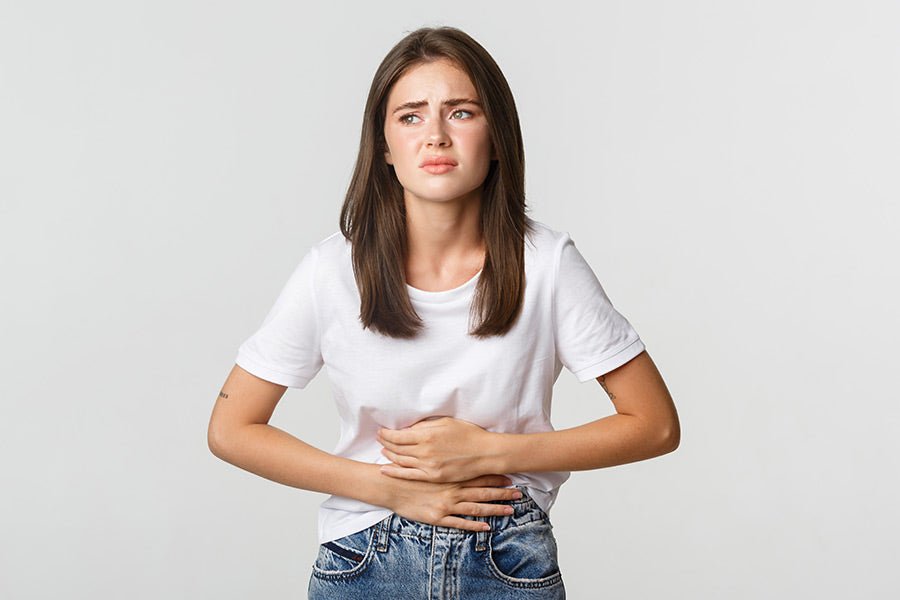
Cramps are a common experience for women during their fertility cycle. While it can be frustrating in some cases, it also helps you understand your fertility cycle.
For example, ovulation cramps can help you detect your ovulation days, which is critical for successful conception. Similarly, pregnancy cramps can tell you about your pregnancy way earlier than many other pregnancy symptoms.
However, it can be tricky for some women to distinguish between period cramps vs early pregnancy cramps since they occur in a similar time frame, unlike ovulation cramps that occur 10 to 14 days before the expected period day [1].
In this article, we will explore the key differences between period cramps and early pregnancy cramps to help you better understand your reproductive cycle and plan care for you accordingly.
Female Reproductive Cycle
For a thorough understanding of different types of cramps during a female reproductive cycle, you need to understand the reproductive cycle first. The female reproductive cycle consists of four prominent phases. These are:
-
Menstrual Phase (Day 1 to 5)
It is the start of the menstrual cycle when the inner uterine lining developed in the previous cycle starts to shed. The uterine lining develops initially to support the pregnancy, but when pregnancy does not occur, the lining starts to tear and shed [2]. This shedding of the uterine lining results in vaginal bleeding, also known as period blood.
-
Follicular Phase (Day 1 to 13)
The follicular phase starts along with the menstrual phase but extends until ovulation. In this phase, follicle-stimulating hormone (FSH) promotes the egg maturation process within the follicles [3].
On the other hand, estrogen levels also start to rise in the middle of the follicular phase, after the menstruation phase is over, to prepare the uterine lining for potential pregnancy.
-
Ovulation (Day 14)
Ovulation is the time when one of many mature follicles within the ovaries ruptures and releases an egg inside the ovaries [4]. A hormone called luteinizing hormone (LH) facilitates this release of egg from the follicle. The egg travels to the fallopian tube for potential fertilization by a sperm cell.
-
Luteal Phase (Day 15 to 28)
It is the time when estrogen and progesterone levels start to rise. These hormones prepare the 10 week size uterus for pregnancy by thickening the uterine lining with blood vessels and supporting tissues [5].
However, if fertilization doesn't occur during this time, the estrogen and progesterone levels start to drop by the end of the luteal phase. Low estrogen and progesterone promote the shedding of the uterine lining, and it marks the beginning of the menstrual cycle.
The luteal phase is also the time when women experience premenstrual syndrome or PMS [6]. It is a combination of symptoms like breast tenderness and food cravings that occur a week or two before the menstruation phase.
What Causes Menstrual Cramps?
When pregnancy does not occur in the luteal phase of the menstrual cycle, the uterus starts to contract to shed its inner lining. Prostaglandins are the hormones that promote the tightening of the uterine muscles and shedding of the inner lining [7].
When these contractions and shedding occur, women feel strong cramps in the lower abdomen, called the menstrual cramps or period cramps. Menstrual cramps typically start a day or two before menstruation actually begins [8].

Characteristics of Menstrual Cramps
There are some characteristic features of menstrual cramps that can help you difference between period cramps and pregnancy cramps more clearly. These are:
- Pain Location: During menstrual cramps, you may feel aching, throbbing pain in the lower abdomen, lower back, and thighs.
- Intensity: The intensity of the pain varies depending on individual factors like hormonal levels. Some women experience very mild pain, while others find menstrual cramps very intense and unbearable.
- Duration: These cramps usually start a day or two before the period begins, and their intensity decreases as the period progresses [8].
What Causes Early Pregnancy Cramps?
Early pregnancy cramps occur as the body adjusts to pregnancy. One major cause is implantation when the fertilized egg attaches to the uterine lining.
The attachment of a fertilized egg into the uterus promotes the expansion of the uterus to accommodate the growing embryo. This often results in cramps in the lower abdomen which makes pregnancy symptoms vs menstrual symptoms debate more important.
Characteristics of Early Pregnancy Cramps
If you understand what do early pregnancy cramps feel like, you can easily distinguish menstruation vs pregnancy. Here are some characteristics feature of early pregnancy cramps:
- Pain Description: Early pregnancy cramps often feel like mild pulling, stretching, or tingling sensations. This is different from throbbing pain in the period cramps.
- Timing: These cramps usually occur 6 to 12 days after ovulation, well before a missed period. In contrast, the period cramps occur just 2 days before the expected period date.
- Associated Symptoms: Some women also experience light spotting in addition to cramps, which is called implantation bleeding. The color of implantation blood is light pink or brown, unlike the dark red color of period blood [9].

Key Differences Between Period and Early Pregnancy Cramps
The following difference between pregnancy cramps and period cramps can help you identify if your body is signaling period cramps or pregnancy cramps:
- Timing and Onset: Period cramps or menstrual cramps begin just before or with the start of menstruation. On average, women feel these cramps 2 days before a missed period [8]. On the other hand, early pregnancy cramps occur earlier, before a missed period.
- Pain Sensation: Period cramps are often intense and throbbing, caused by strong uterine contractions. Pregnancy cramps usually have mild intensity, and they feel like a pulling or stretching sensation.
- Duration: Menstrual cramps can last for several days, while early pregnancy cramps are short-lived and sporadic. These signs of period vs pregnancy makes it easy to draw a clear line between PMS vs pregnancy symptoms.
Associated Period Symptoms vs Pregnancy Symptoms
Cramping is just one sign of early pregnancy or menstruation, and there are several other PMS symptoms vs pregnancy symptoms that can help easily distinguish between these two events.
Period Symptoms
Menstrual cramps are often accompanied by several other symptoms that are consistent and predictable each cycle, helping to differentiate between premenstrual cramps vs pregnancy cramps [10]. These include:
- Mood swings.
- Bloating.
- Breast tenderness.
- Acne breakouts.
Pregnancy Symptoms
Implantation of the fertilized egg into the uterus, or pregnancy in simple words, also causes distinct symptoms, which include:
- A missed period.
- Nausea or morning sickness.
- Fatigue.
- Breast changes, such as tenderness or darkened areolas.
- Increased urination.
Tracking these PMS and pregnancy signs can help distinguish PMS cramps versus pregnancy cramps. These associated signs can tell whether you are pregnant or PMS symptoms are the reason you are feeling cramps.
When Should You Take a Pregnancy Test?
If you’re unsure whether you’re experiencing PMS cramps vs pregnancy cramps, it is a good idea to take a pregnancy test at home. Experts recommend taking a pregnancy test to differentiate PMS vs early pregnancy after a missed period [11].
Testing pregnancy earlier than this can result in inaccurate results since the body takes time to adapt to the pregnancy changes. Signs like implantation bleeding or persistent fatigue may also suggest it’s time to check for pregnancy.
Common Misconceptions About Cramps
Many people assume all cramps feel the same, but the difference between period pains and pregnancy cramps can be significant. While menstrual cramps are typically more intense, pregnancy cramps are usually mild and accompanied by different symptoms.
If you’re confused about whether you’re experiencing pregnant symptoms vs period symptoms, keeping track of the timing, intensity, and associated signs can provide you with a clear picture.
When to Seek Medical Attention
Both menstrual cramps vs pregnancy cramps are usually normal, but you should not ignore severe or prolonged pain during PMS or early pregnancy. Consult a doctor for PMS or pregnancy signs if:
- The cramps are extremely painful and interfere with daily activities.
- There’s heavy bleeding or clotting.
- You experience unusual symptoms like fever, nausea, or sharp, localized pain.
Such signs can be an indication of conditions like endometriosis, ovarian cysts, or ectopic pregnancy, which require medical attention.
Conclusion
There is a difference between period cramps and pregnancy cramps, which many women find confusing. Menstrual cramps are typically intense and associated with predictable symptoms such as mood swings and bloating. In contrast, early pregnancy cramps are milder and occur with unique signs like implantation bleeding or fatigue.
You can differentiate period vs pregnancy symptoms or period cramps vs early pregnancy cramps by keeping a close eye on associated symptoms and the timing when these symptoms appear. If you are still in doubt and unable to understand period cramps vs pregnancy cramps, you must consult your doctor for more accurate identification of your signs.
FAQs
-
Do pregnancy cramps feel like period cramps?
Period vs pregnancy cramps can feel similar, especially in the early stages. However, pregnancy cramps usually have a mild intensity and a shorter duration. In addition to cramps, symptoms like spotting or fatigue can help differentiate pregnancy symptoms versus period.
-
What do pregnancy symptoms before missed period indicate?
Pregnancy cramps and other symptoms like spotting can begin as early as 6 to 12 days after ovulation. These are often associated with implantation, which happens before a missed period. The timing can help you identify signs of period vs signs of pregnancy.
-
What does cramping after ovulation indicate?
Ovulation itself causes mild cramping or pain like sensations in the ovaries. Cramping a few days after ovulation can be a sign of implantation of the fertilized egg into the uterus.
Resources Used
- Mittelschmerz - Symptoms and causes. (n.d.-b). Mayo Clinic. https://www.mayoclinic.org/diseases-conditions/mittelschmerz/symptoms-causes/syc-20375122
- Dasharathy, S. S., Mumford, S. L., Pollack, A. Z., Perkins, N. J., Mattison, D. R., Wactawski-Wende, J., & Schisterman, E. F. (2012). Menstrual Bleeding Patterns Among Regularly Menstruating Women. American Journal of Epidemiology, 175(6), 536–545. https://doi.org/10.1093/aje/kwr356
- Follicle-Stimulating Hormone (FSH). Cleveland Clinic. https://my.clevelandclinic.org/health/articles/24638-follicle-stimulating-hormone-fsh
- Holesh, J. E., Bass, A. N., & Lord, M. (2023j, May 1). Physiology, Ovulation. StatPearls - NCBI Bookshelf. https://www.ncbi.nlm.nih.gov/books/NBK441996/
- Marquardt, R. M., Kim, T. H., Shin, J., & Jeong, J. (2019). Progesterone and Estrogen Signaling in the Endometrium: What Goes Wrong in Endometriosis? International Journal of Molecular Sciences, 20(15), 3822. https://doi.org/10.3390/ijms20153822
- Gudipally, P. R., & Sharma, G. K. (2023, July 17). Premenstrual Syndrome. StatPearls - NCBI Bookshelf. https://www.ncbi.nlm.nih.gov/books/NBK560698/
- Professional, C. C. M. (2024g, May 1). Prostaglandins. Cleveland Clinic. https://my.clevelandclinic.org/health/articles/24411-prostaglandins
- National Library of Medicine. (n.d.-a). Period Pain. Menstrual Cramps | MedlinePlus. https://medlineplus.gov/periodpain.html
- What is Implantation Bleeding? American Pregnancy Association. https://americanpregnancy.org/pregnancy-symptoms/what-is-implantation-bleeding/
- Weon, H. W., & Son, H. K. (2023). An Analysis of Menstrual Symptoms, Menstrual Attitudes, Physical Stress and Psychological Stress According to the Menstrual Cycle Phase. Iranian Journal of Public Health. https://doi.org/10.18502/ijph.v52i6.12958
- Professional, C. C. M. (2024s, September 9). Pregnancy Tests. Cleveland Clinic. https://my.clevelandclinic.org/health/diagnostics/9703-pregnancy-tests






